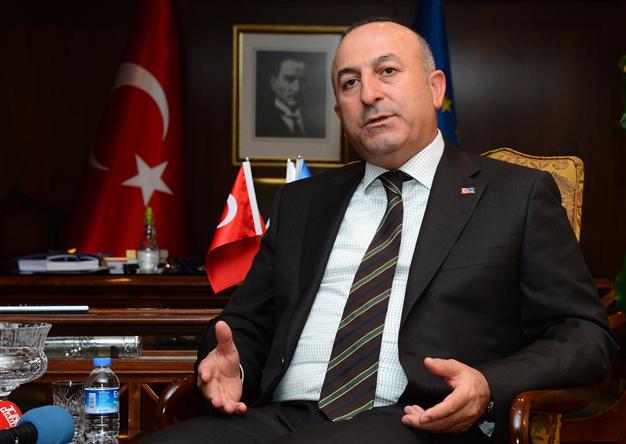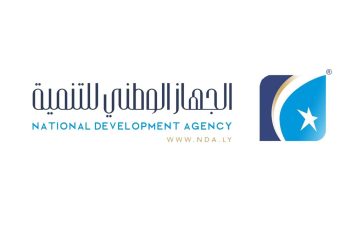By Sherine N. El Taraboulsi.
Oxford, England, 1 December 2013:
Libya is making headlines again and not with the best of news. Violence . . .[restrict]has erupted in both the East and the West with rising numbers of casualties and no end of instability in sight; a sense of frustration and exhaustion seems to dominate the public realm.
Libya is in purgatory both literally and figuratively. It is paying for the sins of the past, some committed by its own people but mostly committed by forces that sought to control its resources without an understanding of the specificity of its context.
As Michael Ondaatje’s The English Patient describes it: “All I desired was to walk upon such an earth that had no maps”. It is the land that has no maps and that is Libya’s curse and blessing; without maps, it could be easily violated but it also remains the land of possibility. Today, it is literally stuck between a launched but incomplete state building process and the entrenched statelessness of the past.
There is a logic to statelessness in Libya, unlike what many would think – it is not random. There are structures of statelessness that need to be unpacked and restructured towards building the new Libya. Instead of restructuring, the tendency is almost always directed to effacement.
Tribal confederations are an example; for 20 years the Ottomans sought to defeat the tribal confederations of the Mahamid and Awlad Sulayman in Tripolitania and Fezzan, the Italians perceived the Libyans as a monolith non grata composed of non-descript multiple tribes, so much so, that by the time the Italian occupation ended, Libya was left with only seven university graduates.
The Italians left Libya with an infrastructure of roads but without an infrastructure of a state, and fought whatever kernel of state building there was. Libya’s history is the story of multiple rounds of state building and state effacement; processes get launched and then get effaced. The reasons are various but a common theme seems to be a lack of understanding of the sociocultural context and the illusion that change and state building is top down.
More than two years after the death of Qaddafi, Libyans are still struggling to find peace and security. The GNC, formerly hailed as a success on the path towards building a democratic state, could not meaningfully contribute to resolving the crisis – It tried but it was not heard.
The example of Tripoli is instructive; it was only with the meeting of the local councils that a way out was charted. This is not the end of the revolutionary fervor in Libya, nor the end of the state building process. This is, however, a severe setback and there are some lessons learned that need to be taken into consideration as we go forward.
Myths, Realities and Priorities
There are a number of myths about Libya that need to be expunged for a serious evaluation of the situation and to be able to strategically think of state formation. Those include:
Libya is stateless
Conventional statehood wisdom can easily discount Libya as a non-state or stateless country. This overlooks indigenous and local structures of governance that can be replicated at the macro level. As Douglass North puts it, “states are organizations of organizations”; organizations are groups of people structured around a specific need or cause.
Tribal confederations are one of the oldest forms of organizations in Libya, they have their own systems of adjudicating differences, their own trade structures and those warrant close examination, not as an impediment – which they can be and have been – but more along the lines of an opportunity towards building a state out of local models.
A state will never be built until it is in the best interest of leading tribes to give away some of their privileges in exchange for state institutions that integrate Libya within the global realm.
Libya has no national identity
Libya has not been allowed to develop a unified national imaginary; it lacked the institutions that would help them develop that. Waves of colonialism and its geography composed of wide expanse of dry desert have not allowed Libyans to know or meet one another.
It was only in 2012 that Libyans from the East actually got to be unified with Libyans in the West towards one cause. Under Qaddafi, no institutions or structures were developed to allow that to happen; Qaddafi equated Libyan national identity with nothing but himself. The world only knew Libya through Qaddafi and so did the Libyans themselves.
This has, however, changed. Two processes have been launched that point towards the existence of a national imaginary: a revisiting of Libyan history by Libyans themselves and a rise in civil society organizations that are increasingly communicating with one another. Libya today has a national identity in the making.
Libya has no real civil society
Libya’s safety net seems to be its very diverse and active civil society. Under Qaddafi, civil society was monopolized for propaganda purposes; the Qaddafi foundation was used as an exterior to cover atrocities taking place back home and the rise of Saif Al Islam Qaddafi came hand in hand with the rise of the foundation.
But there were still local structures of welfare that existed, community organizations did exist, keeping a low profile and not formalized by the state nevertheless. Libya has a long history of waqf (endowment) which, interestingly enough, contributed to the rise of the Senusi Kingdom. All waqf was later nationalized by Qaddafi as did Nasser in Egypt.
Today, hundreds of organizations have mushroomed across the country and have formed coalitions and there role will prove central in the building of the new Libyan state.
Priorities
Controlling the Violence: Ending the violence completely, in the very short term, seems to be far fetched under the circumstances, but controlling it is a necessity. This can only happen with the consolidation of community as well as government efforts.
The unregulated contracting of militias has contributed to the expansion of violence as well as enhancing regional divides; this needs to be addressed. Numbers reached over 200,000 fighters on the payroll. Not all of the fighters were part of the war against Qaddafi, a shocking number especially for a population of six million.
Change needs to emerge organically from the bottom-up: Tools and mechanisms that facilitate meaningful and better communication on critical issues between the GNC and local entities needs to be developed; one will not replace the other but both are complimentary to one another in the process of change.
A new generation of Libyan policymakers needs to emerge: The current government should think long-term and put in place strategies towards graduating a new generation of policymakers; training Libyan youth into developing ideas to policy seems essential.
International donors and organizations are advised to invest more in understanding the local context than in launching new programs: Libya is opening up to the world after decades of isolation, so there is a need for cooperation. It is how this cooperation happens that is important. International actors need to listen to their Libyan counterparts as equals and recognize that uninformed interventions can be damaging.
Sherine N. El Taraboulsi is a DPhil (PhD) Candidate at the Department of International Development, Queen Elizabeth House (QEH), the University of Oxford.
[/restrict]




